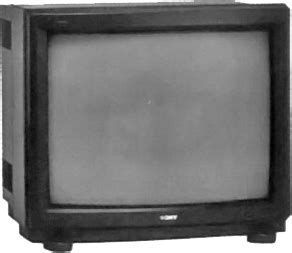Sony’s PVM-4300, a colossal giants in the realm of CRT technology, embodies an era when display technology was not merely defined by the decreasing prices and increasing resolutions that we see today. At 450 pounds and with a price tag of $40,000, the PVM-4300 was both a marvel and a monstrosity, designed primarily for professional environments rather than typical living rooms. Its weight alone, likened by some to a piano or a medium-sized car engine, presents logistical challenges that underline how extraordinary this piece of technology was. But this behemoth wasn’t just about size and expense; it was a visual feast that remained unquestioned in the world of analog displays.
When considering the monumental task of moving such a device, many potential issues arise as evident from the discussions around using engine hoists or worrying about whether the floor or furniture could hold the TV’s immense weight. The technological prowess of the PVM-4300, though lauded, was overshadowed by practicality concerns, a common theme reflected in the user comments. The physical limitations of the device – which were inherently tied to the necessary strength to hold a near-perfect vacuum within a larger glass display without shattering – offers an intriguing view into the material sciences and engineering that powered CRT displays. The heavy glass wasn’t just for ruggedness; it played a critical role in maintaining the tube’s vacuum essential for its operation.
A user noted how only three PVM-4300 units were sold by April 1990, a testament to its niche appeal and prohibitive cost. Adjusted for inflation, that $40,000 would equal nearly $100,000 today, exemplifying its elite market position. It’s fascinating to reflect on the economic and practical limitations that kept such technology out of reach for the average consumer. Another commenter even humorously noted that Doom 2 would have been a visual delight on such a display, even if only in theory since the game was released four years after the PVM-4300. This highlights the enduring appeal of CRTs for retro gamers and tech enthusiasts, many of whom continue to seek out these vintage items for their unmatched display quality in gaming.
From discussions about the durability of CRTs to their eventual obsolescence due to technological advances, there’s a lingering nostalgia for the quality and unique characteristics of CRTs. A notable mention was Sony’s KD-34XBR970, another heavy-set CRT with extraordinary picture quality for its time, showing that even as technology advanced, certain aspects of CRTs were hard to beat until OLED and other modern technologies came into play. This weight and durability trade-off brings into sharp focus the evolution and eventual decline of CRTs. Indeed, part of the PVM-4300’s appeal was its capability to display video with an authenticity and depth that early LCDs struggled to replicate, making it invaluable for applications requiring precision.
Reading through the comments, there’s a palpable sense that while we’ve moved on to more convenient and advanced technology, the allure of the CRT’s authentic, warm visuals still has a grip on enthusiasts. This is vividly seen in the retro gaming community, which prizes CRT’s display quality for older consoles over the crisp, but often harsh, modern screens. The rise of LCD technology, which rapidly became lighter, cheaper, and easier to produce, didn’t completely erase the memory of CRTs. Instead, it placed a spotlight on them as remarkable technological marvels of their time. As many reflective comments suggest, there’s a special niche where such heavy, unwieldy devices are not only remembered but celebrated for their unique contribution to display technology.


Leave a Reply